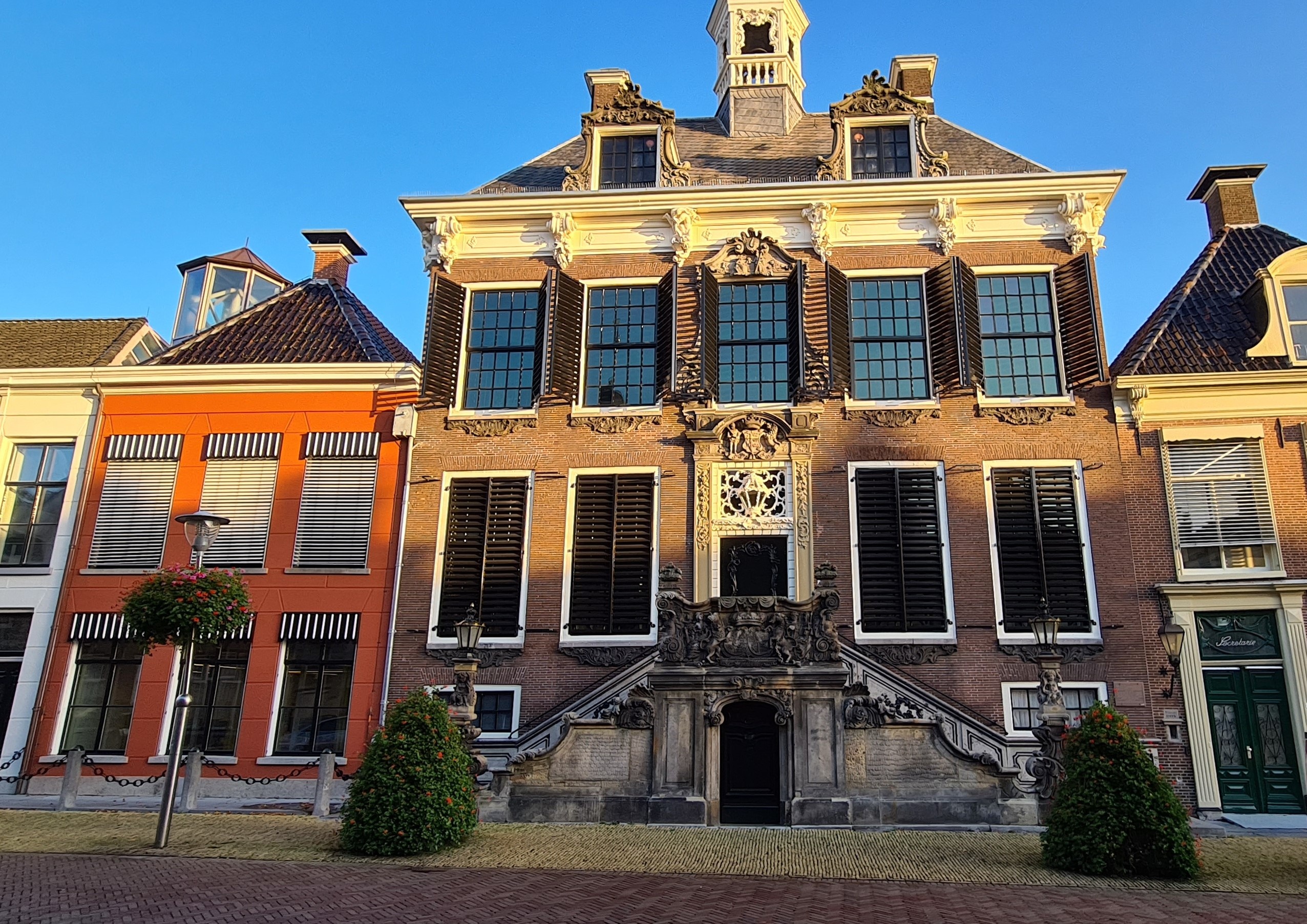
City Hall Sneek
Sneek's Town Hall was built around 1478. The building was then erected on the foundations of two Stinsen: a medieval, defensible, habitable tower. After that, the Town Hall was expanded and rebuilt many times. In 1763 it received its current facade in Rococo style. A style created in France and Italy as a reaction to the strict classicist baroque of around 1700. The building has been renewed and expanded several times. However, it has retained the baroque platform from 1745. In addition to the many beautiful aspects of the Town Hall, attributes of the Sneker militia and the helmet of Grutte Pier, who died in Sneek in 1520, can be seen in the Marksmen's Room.During the renovation from 1760 to 1763, the Town Hall was raised by one floor. In the years 1923-1925 a restoration took place under the direction of the architect and interior designer Willem Penaat from Amsterdam.
Because of space use, the building has also been extended many times and adjacent properties, including the Waltastins, have been added. The balcony was designed by the Sneeker sculptor Gerben Jesse Nauta. Above the entrance door in the bordes, which is decorated at the top with rocailles (shells), is the Coat of Arms of Sneek. The coat of arms is held by a lion and a wild man. Above the same door, the top of the center window features a large allegorical representation. On it, a female figure, holding in her hands a law table (which stands for justice), hands a bundle of arrows to a male figure (who himself represents freedom, because of his freedom hat). This bundle of arrows symbolizes the Republic of the United Netherlands. Also depicted on the steps are an elephant (gentleness), a lion (magnanimity) and a firepot (Heaven).
Behind City Hall is the City Hall Garden. After the renovation to City Hall in 2019, the City Hall Garden has been redesigned, it has taken on more of the character of an enclosed city garden. In part of the courtyard garden, a transparent company restaurant has been created, connecting the buildings. At the rear of the city hall, it is still clearly visible that the building is composed of several adjacent buildings. Also in the garden is a memorial stone and monument in memory of the Jewish victims of the Second World War and the Jewish synagogue in the municipality of Sneek.